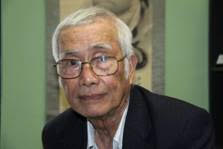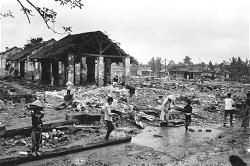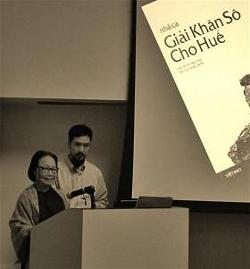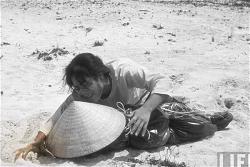It is always a fascinating exercise to look back over the year and try to select the most memorable books reviewed. Why this book and not that one? By what criterion does one make one’s choices? I have decided finally on the simple measurement of a gut instinct: how much of the book in question remains in my memory, deserving to be re-read.
Praying with St Paul (Magnificat, 384pp, £10/$13), edited by Fr Peter John Cameron OP, is a series of essays and reflections on St Paul for each day of the year, reminding us not only what a wonderful phrase-maker Paul is, but also what it means to follow Christ to the end or, as St Paul puts it, to “run the race to the finish”.
All Catholics should read Conversion: Spiritual Insights into an Essential Encounter with God by Fr Donald Haggerty (Ignatius, 270pp, £13/$18). It is not about new converts to the Faith so much as explaining why Catholics need to move from formal assent and practice to a much deeper level of commitment: a personal relationship with God – as the saints have always testified from their own experience.
Charles Coulombe, an authority on the medieval Catholic origins of the Grail and Arthurian legends, reminds readers in A Catholic Quest for the Holy Grail (TAN Books, 264pp, £22/$28) that all the miraculous, sacramental, devotional and chivalric elements of these legends are closely bound up with the Christian faith – as is Wagner’s Parsifal and TS Eliot’s The Waste Land.
Subtitled How Catholic Priests Helped Build – and Can Help Rebuild – Western Civilization, Fr William Slattery’s Heroism and Genius (Ignatius, 300pp, £20/$30) should be read alongside Charles Coulombe’s book. In an absorbing survey of Church history after the fall of Rome, Slattery demonstrates how a Christian culture slowly developed following the spread of the Faith in the so-called Dark Ages, to flower magnificently in the 12th century. It is intended to remind contemporary Catholics that they must once again “become active in their missionary and evangelical mandate”.
In an age when traditional families are becoming the minority, Fr John Murray, in Saints for the Family (Messenger Publications, 96pp, £9/$18), points to inspiring exemplars of family life, such as St Thomas More, Louis and Zélie Martin, Dr Jerome Lejeune, the saintly Catholic bio-geneticist, and Jozef and Wiktoria Ulma, a Polish farming couple shot dead by German soldiers in 1944, along with their six young children, for hiding eight Jews in their house. They knew full well the fatal consequences of discovery. They may well become the first family to be canonised in Church history.
Peter Kreeft, the author of Forty Reasons I Am a Catholic (Sophia Institute Press, 144pp, £12/$15), writes with his customary humour and panache, laying out unapologetically why he loves his Faith. The book is short and chapters include titles such as “Because of Cathedrals”; “Because of my mother” and “Because of the Movies”. In explanation of this last, Kreeft makes the unassailable point that “Whenever [Hollywood] makes a serious movie and religion is in it, it is always a Catholic church and a Catholic priest that they use.”
Maolsheachlann O Ceallaigh’s Inspiration from the Saints (Angelico Press, 254pp, £12.50/$16.95) is different from the saints’ book mentioned above. Here, the author generally alights on saints who began very unpromisingly, such as St Joseph of Cupertino who is in the chapter entitled “Losers”, along with the Curé of Ars and St Benedict Joseph Labre, who struggled with severe depression. The author reminds us of the difficulties facing St Maximilian Kolbe in setting up his apostolic enterprises, understanding that “Each of us only has one lifetime to say “yes” to Christ … Tomorrow may be too late”.
Fr Thomas Berg, in Hurting in the Church: A Way Forward for Wounded Catholics (Our Sunday Visitor, 208pp, £14.50/$16.95), has tackled a sensitive topic – that of clerical abuse. It is worth reading by all who have suffered in some way from clerical abuse (not only sexual but also psychological and emotional), as it shows that healing is possible. This has to start with an honest acknowledgment of what has happened, followed by hope, acceptance, and finally a deeper understanding of how God prepares people throughout their lives for transformation and lasting healing.
The author writes from his own sense of betrayal at the hands of his former religious order, the Legionaries of Christ, which for years suppressed the truth of the immorality of its founder, Marcial Maciel.
Fr John Horgan, in His Angels at Our Side (EWTN/Gracewing, 304pp, £15/$18.95), has written the most profound book I have ever read on who the angels are, why God created them, their cosmic role and why guardian angels are charged with a significant role in our lives.
There is a temptation for sophisticated or educated Catholics to disregard the existence of angels. That is our loss. Although we will only fully appreciate their role when we die and meet God face to face, it is a pity not to enlist their help and pray to them for guidance and protection during our lives.
Source:
https://catholicherald.co.uk/magazine/nine-books-that-will-lift-your-spirits/








